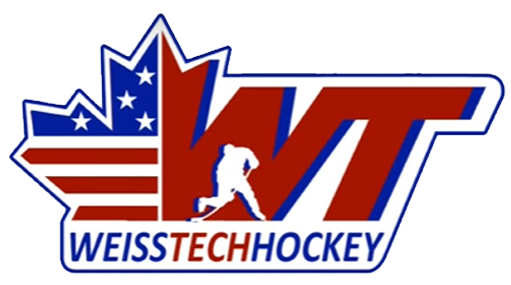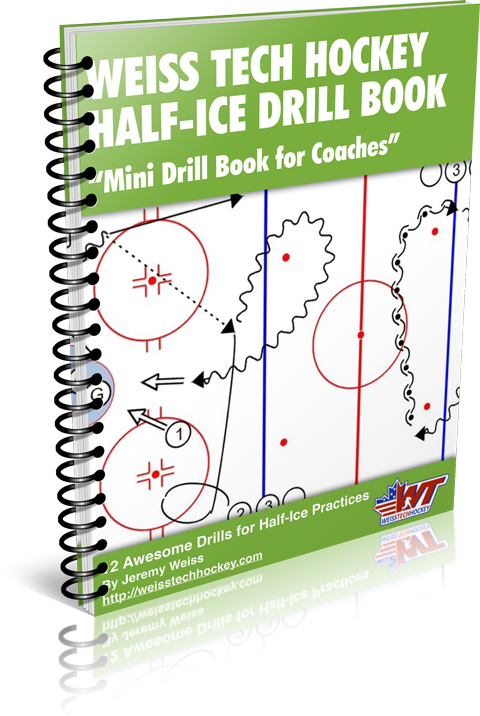Improve your Physical Skills, Mental Skills, and Physical Conditioning to Dominate your Opponent!
In this post I’m going to discuss what I call the 3 AREAS OF HOCKEY DOMINANCE… now I know that title sounds a little dramatic, but the reality is, if you implement the information I’m about to share with you into your hockey development strategy, you will be miles ahead of your opponent, EVERY TIME YOU STEP ON THE ICE!
This video will be equally beneficial for both players, coaches, and even parents who want to be on-board with their players’ development. So, let’s go ahead and get started!
 The 3 Areas of Hockey Dominance
The 3 Areas of Hockey Dominance
The 3 Areas of Hockey Dominance are Physical Skills, Mental Skills, and Physical Conditioning. Now we can break each of these areas down into sub-categories, and get very specific, which we will, but at the end of the day, the best players at ANY age group (that’s correct, I said ANY age group), will be the ones who perform the best in each of these 3 areas… neglect even one of these areas, and we’re giving our opponent the opportunity to gain an advantage over US!
Physical Skills
We all know hockey is an extremely dynamic game… there is so much going on at so many different levels of cognition… our strategy will be to systematically eliminate as much THINKING as possible on the PHYSICAL and TACTICAL aspects of the game, so that our players’ brains can free to function at higher levels during game play. I know that might sound a little confusing, so let me give a quick example:
There are three key components that go into an effective skating stride:
- Proper knee bend
- Correct pushing angle – which is to the side at about a 45 degree angle
- Full extension (including the toe-snap) with a full recoil back to the starting position
Well… that’s a lot to think about! If a player had to worry about all that on the ice, the likelihood of he or she to be able to read, anticipate, and react at any level of proficiency would be extremely LOW!
So, we need to teach and reinforce proper technical skills until they become second nature. Our players should execute the three elements of a skating stride properly, every single stride, of every single game, without ever having to think about whether or not they’re doing it properly!
Now obviously, skating isn’t the only physical skill that players need to be able to perform in their sleep. A few years ago I put myself through an interesting thought exercise. I wanted to map out ALL of the skills a hockey player needed to be able to perform. So I sat down and wrote out every single variation of every single skill in hockey I could think of. I might have missed a few, but I think I got most of it.
I knew the list would be big… but I was surprised by HOW big it really was! Here’s what I came up with:
Skating Skills
- Forward Skating in a Straight Line
- Inside Edges
- Outside Edges
- Forward Crossovers
- 5-Step Crossovers for Drive Skating
- V-Starts, Crossover Starts
- 2-Foot Stop, Inside Edge Stop
- Outside Edge Stop
- Crossover Stop
- Backward C-Cuts
- Backward Cross-Unders
- Backward 3-Step Cross-Unders for Drag Skating
- Pivots – Forward to Backward to the left side and to the right
- Pivots – Backward to Forward to the left side and to the right
- Inside Reverse Pivots both directions
- Inside Mohawks both directions
- Power Turns both directions
That’s just skating! At some point you’ve gotta put a puck on your stick, and hopefully be able to execute the following, WHILE maintaining proper skating technique on everything we just mentioned:
Puck Skills
- Stationary Stickhandling (to the Left Side, Right Side, and Center of Body)
- Toe Drag
- Deking
- Puck Protection & Body Positioning
- Puck Control While Skating
Passing
- Cushion Puck While Receiving & Sweep While Delivering
- Touch Passes
- Drop Passes
- Saucer Passes
- Bank Passes
- Chip Passes for Breakouts
- Backhand Passes
If everything got as planned… hopefully you get a chance at a shot on net. SO… you’d better have a solid shot selection to choose from!
Shooting
- Wrist Shot
- Snap Shot
- Slap Shot
- One-Timer
- Deflections
- Backhanders
- Flip Shot for Dump-ins
Now obviously it takes YEARS to become 100% proficient at all of these skills… but that’s all the more reason to begin implementing these training methods AS SOON AS POSSIBLE. Structured training sessions are key to making this happen, and it can, and should be done at even the YOUNGEST age groups!
Get Skills “Out of the Way”
As I mentioned earlier, our objective is to get our players to become SO well-skilled, that we can psychologically “get skills out of the way” so to speak, opening up mental real-estate for the more complex aspects of the game. This development strategy will allow our players to think the game more quickly and clearly than the opponent.
So… what are the MENTAL SKILLS that we should be teaching our players? well, I’m glad you asked! The same day I penciled out all the physical skills of the game, I also went through and mapped out all the MENTAL aspects of the game, which include both tactical skills and positional, or situational, understanding.
Defensive Tactics
- Gap Control
- Force vs. Contain strategy
- Angling
- Checking
- Pinning
- 1 on 1’s, 2 on 1’s, 2 on 2’s, 3 on 2’s
- Defensive Support
Offensive Tactics
- Triangulation
- Cycling
- Front and Backside Support
- Delays
- Give and Go’s
- Angling and Body Positioning on Forecheck
Neutral Zone Tactics
- Area Passing
- Timing
- Neutral Zone Support
- Backchecking (which sort of happens in any of the 3 zones, depending on where the turnover occurred)
 Positioning
Positioning
Continuing along on the mental skills side of the equation, we progress into POSITIONING. The objective with positioning is not only to BE in the right place at the right time, but our players must be capable of DOING the right thing, while in the right place, at the right time, or in other words, applying the proper TACTIC while in the proper POSITION.
For example, let’s say the other team has the puck in the corner, and we’re in the defensive zone… it’s great if our strong side defenseman is near the puck-carrier, in proper position, and ready to make a play, but if he FORCES when he should have CONTAINED… that’s a huge problem. Our players need to be able to read and react both positionally, AND tactically, in order to execute at the highest level.
 Tactical Play can Become Instinctive too
Tactical Play can Become Instinctive too
Now, in case you haven’t noticed… many of the tactical skills can also be developed to the point where they become INSTINCTIVE, meaning, players don’t have to THINK about them anymore… just like our objective with physical skills, we want to develop these mental, tactical skills to the point where our players no longer have to think about how to react.
Continuing with our example… The decision of whether to force or contain when the other team has the puck in the defensive corner can be made LONG before our defenseman steps on the ice. Our players should be able to simply RECOGNIZE the ques because they’ve been there a million times in practice, and then react correctly WITHOUT HAVING TO MAKE A CONSCIOUS DECISION EVERY SINGLE TIME!
Once a player gets to the point where he or she is no longer THINKING about the Physical and Tactical skills of the game, but acting and reacting instinctively, the game SLOWS down for the player, and his or her effectiveness increases!
Physical Conditioning
Developing a player’s physical and mental skills is obviously EXTREMELY important… but it’s flat out NOT ENOUGH, if we truly want our players to reach their highest and best.
Our third area of hockey dominance is the one that is most often over-looked… PHYSICAL CONDITIONING. Let me start by saying that ANYTIME you hear about something that is commonly overlooked, your ears should perk up, because that means there’s an area where you can gain an ADVANTAGE over your opponent… well, THIS is one of those areas!
Without getting into a whole bunch of “Jeremy Weiss personal history,” let me just say this… I’ve played some fairly decent hockey in my day, with some fairly decent players… including quite a few who are in the NHL now. Even at high levels of play, including Jr “A” in the Ontario Provincial League, and College Hockey, I was always surprised at how FEW players got to the weight room with ANY level of consistency! There is a HUGE advantage to be gained by the player who consistently executes a top-notch, hockey-specific, conditioning program both in the off-season, as well as the in-season.
Intrinsic Factors
Developing our strength and conditioning will not only help us to physically out-muscle our opponent, and go harder for longer without getting as tired… but there are many intrinsic benefits as well that play a huge role on the ice. Some of these include confidence, leadership, motor coordination, and a whole host of others.
Weiss Tech Hockey is associated with a few high-quality, hockey-specific, off-ice training programs that we use and recommend. You can check them out here:
Everything is Interlaced
So those are the three areas of hockey dominance. The interesting thing about implementing this development strategy is that each of these skills play into each other, and as one improves, it brings aspects of the other two up with it. For example, as a player’s leg and core strength develops because of his or her OFF-ICE CONDITIONING PROGRAM, he or she is able to execute and hold a better knee bend, which results in an improved skating stride – a PHYSICAL SKILL, this improves the player’s ability to maintain better gap control on a 1 on 1, which is a MENTAL & TACTICAL SKILL… You see… it’s ALL INTERLACED! The trick as a coach is to get the ball rolling, and provide the type of learning environment where progress can be made skill upon skill, concept upon concept.
A Huge Thanks!
I just wanted to take a minute and say thanks for checking out this post, and thank you for participating on our drills and skills blog. If this post has been helpful to you as a player, coach, or parent, please feel free to continue to spread the word to your hockey friends, teammates, and associates… we sure appreciate it!
Jeremy








I agree with you a 100% the skating and the strength is important to come first. This allows you to obtain the zone and then this lets you set up for the different attack plans and tatics that you want to use.
exactly! it’s all connected
Happy New Year!
What do you mean by “5 step crossovers for drive skating”?
Thanks,
Rob
it’s a skating technique used to drive wide around the defenseman, then cut to the net. i’ll have to do a video to demonstrate it. watch for it in the summer!